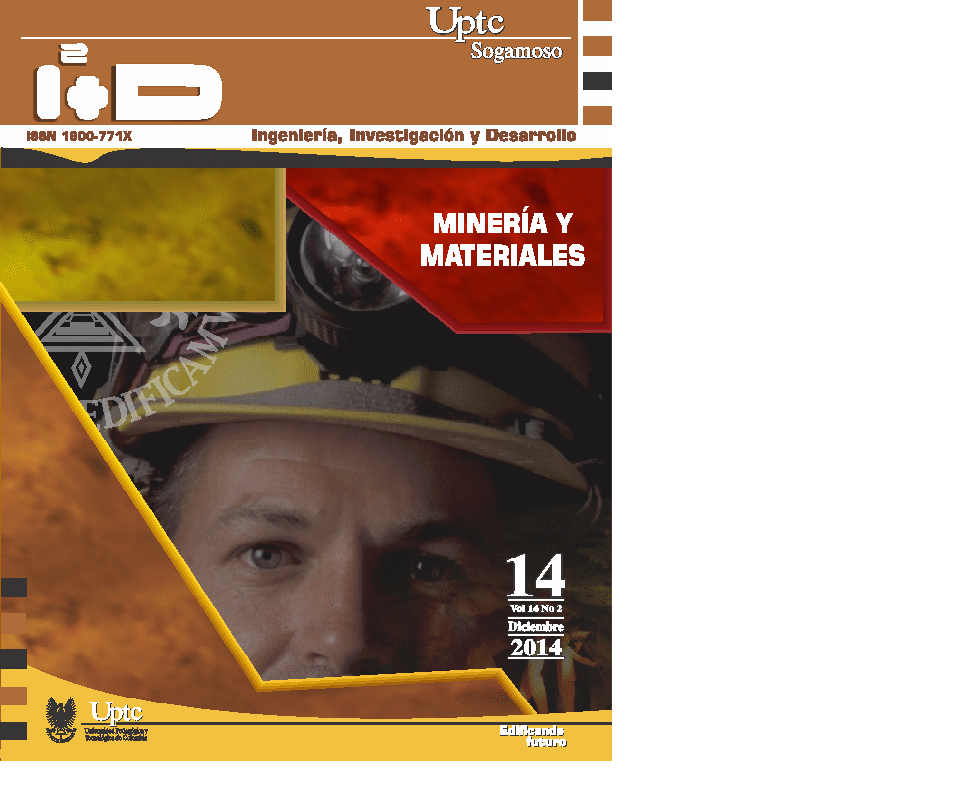Effect of ceramic dental waste in thermo-physical properties of materials composed with polyester resins

Abstract
Thermophysical properties at room temperature of a composite material based on polyester resins and powders obtained from dental ceramic residues for mixtures with percentage by weight of 50-50, 60-40, 70- 30, 80-20 and 90-10 are recorded, where the minority phase are dental ceramic powders with particle size through sieve No. 200 (75 um), and the majority of pre-accelerated polyester resin brand P-2000, and as catalyst (Meck-Peroxide). The manufacturing process of the specimens was by casting them into cylindrical molds of diameter 3 cm and 6 cm long. The properties of conductivity (k) and thermal diffusivity (α) and the specific heat per unit volume (ρc), were found using the KD2 Pro® system which operates on the physical principle of linear transient heat flow. Thermal effusivity (ε) was determined using data from k and α, and the expression ε = k/√ α. The results show that as the percentage of the ceramic powder is increased, the density of the samples increases, and thus the thermal conductivity (k), which is directly proportional to both heat diffusion rate (α) and the amount of heat that the material can store or release (ρc). These results suggest a new material for technological applications, as well as they help to mitigate the environmental impact due to the recycling process of dental ceramic waste.
Keywords
linear transient heat flux, composites, thermophysical properties, dental ceramic waste
References
1. Manzano A., (2010). Materiales compuestos, los materiales del siglo XXI. Cinvestav Querétaro: Centro de Investigación y de estudios Avanzados del IPN, pp. 1-2.
2. Besednjak A. (2011). Los Materiales Compuestos. Capítulo 1.
3. Elizetxea C., Gurmendi U., Pijoan T., (2010). Composites con refuerzos naturales para aplicaciones en automoción y construcción.
Revista de metalurgia, 46, 138-139.
4. Torre C., Sosa G., Rodríguez R., Robles F. (2009). Ecología industrial y desarrollo sustentable. Revista de Ingeniería, 13, 65-67.
5. Artica L., (2011). Cálculo de propiedades termofísicas. Universidad nacional del centro del Perú. Facultad de ingeniería en industrias alimentarias, pp. 2-3.
6. Universidad del País Vasco, (2012). Propiedades térmicas. Capítulo 19.
7. Ostachuk A., Di Paolo L., Ulises O. (2000). Una manera simple de determinar la conductividad térmica de los materiales. Universidad Nacional de General San Martín, pp. 2-4.
8. Muñoz J. (2002). Determinación dela difusividad térmica en Pasta de Murta (Ugni molinae Turcz), en función de la temperatura. [Proyecto de grado]. Valdivia: Universidad Austral de Chile: Facultad de Ciencias Agrarias, Escuela de Ingeniería en Alimentos, pp. 12-15.
9. Domingo J. (2012). Evaluación del comportamiento térmico e higrotérmico de Cerramientos de madera. [Trabajo de Maestría]. Pamplona: Universidad de Navarra, pp. 28-30.
10. Orrego C. (2003). Procesamiento de Alimentos. Universidad nacional de Colombia Sede Manizales. Capítulo 3, Propiedades físicas de los alimentos, pp. 61-63.
11. Alginato Dental. Obtenido el 2 de Septiembre de 2014 en http://dentaltvweb.com/blog/?p=123
12. López J, Alarcón M. (2011). Sulfato de calcio: propiedades y aplicaciones clínicas. Revista Clínica. Periodoncia Implantol, Rehabilitación Oral, 4(3), 138-139.
13. Fontana A., Varith J., Ikediala, J., Reves J., Wacker B. (1999). Thermal properties of selected foods using a dual-needle heat-pulse sensor. En: Institute of food technologists annual meeting; July 24-28 Chicago; p. 2-4.
14. Lemes C., Borges R., Souza L., Correr L., Soares C., Coelho S., (2010). Analysis of filler particle levels and sizes in dental alginates. Mat. Res, 13(2), 3-10.
15. Bermudez C., Florez I., Cardona L., (2009). Manual de Procedimientos para el montaje y análisis de modelos articulados. Medellín: Universidad CES: Facultad de odontología, pp. 2-4.
16. Li-Hong H., Vuuren L., Planitz N., Swain M. (2010). A micro-mechanical evaluation of the effects of die hardener on die stone. Dental Materials Journal, 29(4), 433–437.
17. Miravete A. (2007). Materiales Compuestos I, Vol. 1, Reverté (ed.), Barcelona, España, pp. 488-489.
18. Prontuario de soluciones constructivas. Obtenido el 4 de Septiembre de 2014 en http://cte-web.iccl.es/materiales.php?a=16
19. Gonzales E. (2010). Selección de Materiales en la concepción arquitectónica bioclimática. Maracaibo: Instituto de investigaciones de la facultad de arquitectura y diseño, pp. 3-5.